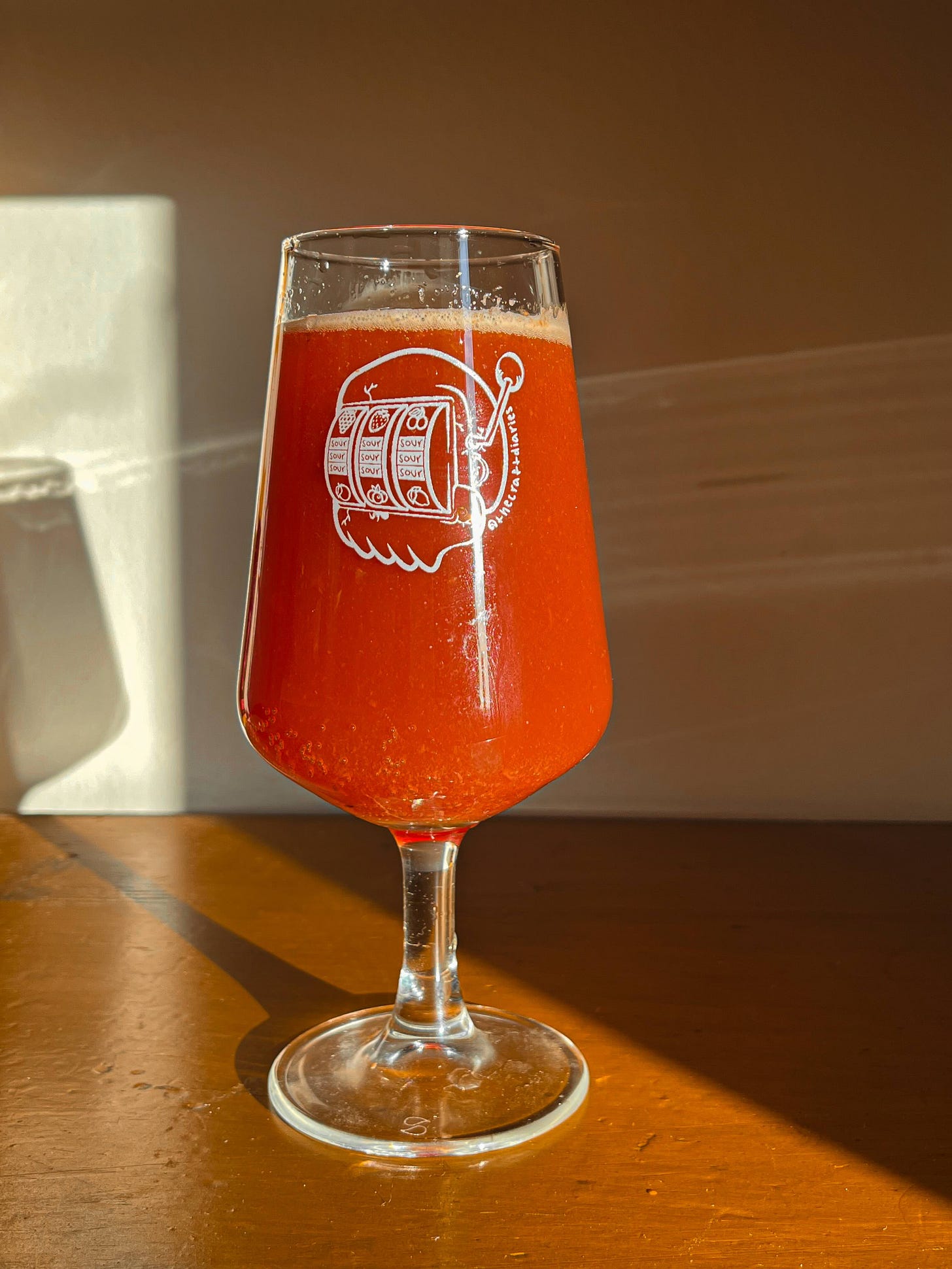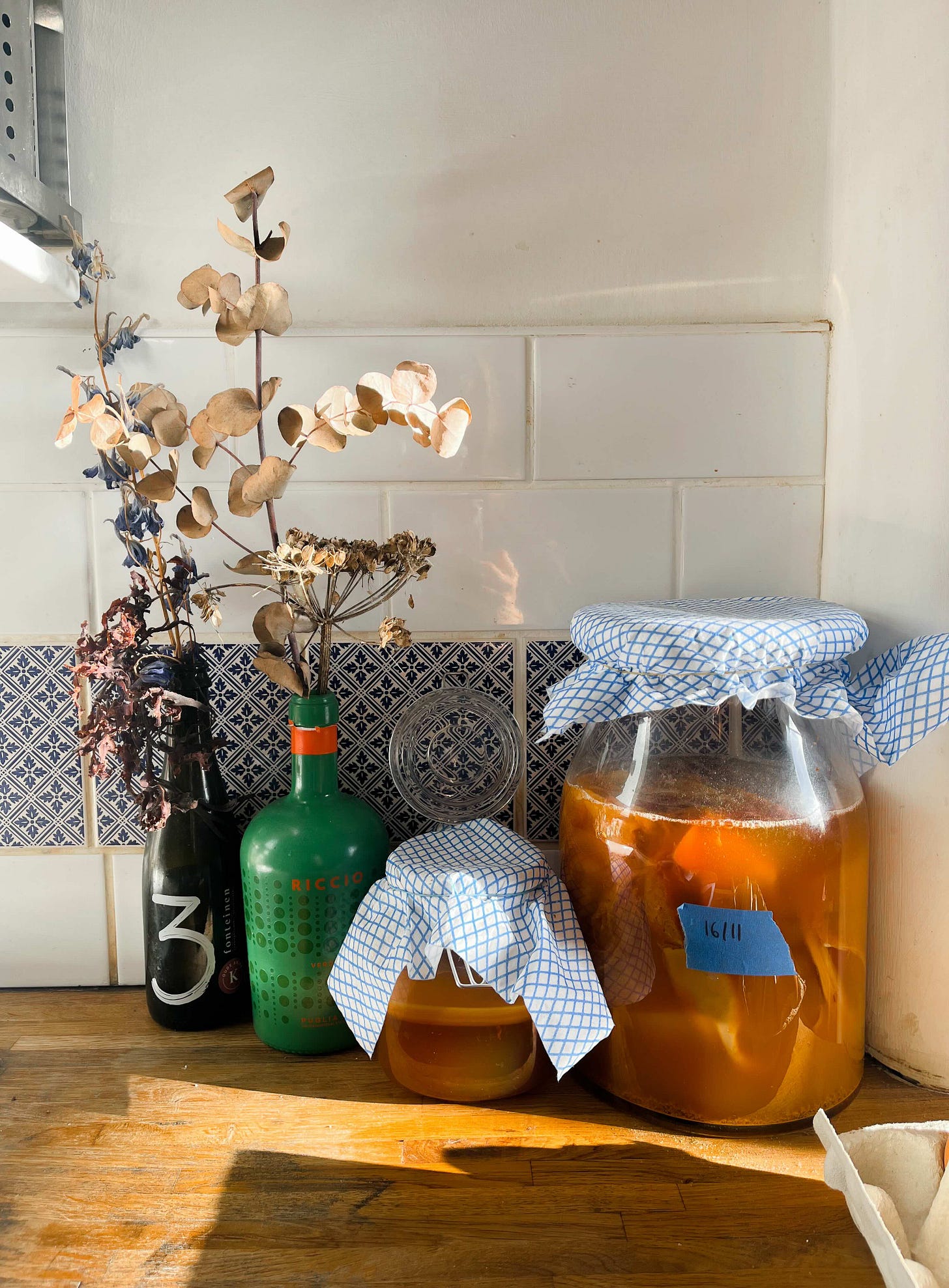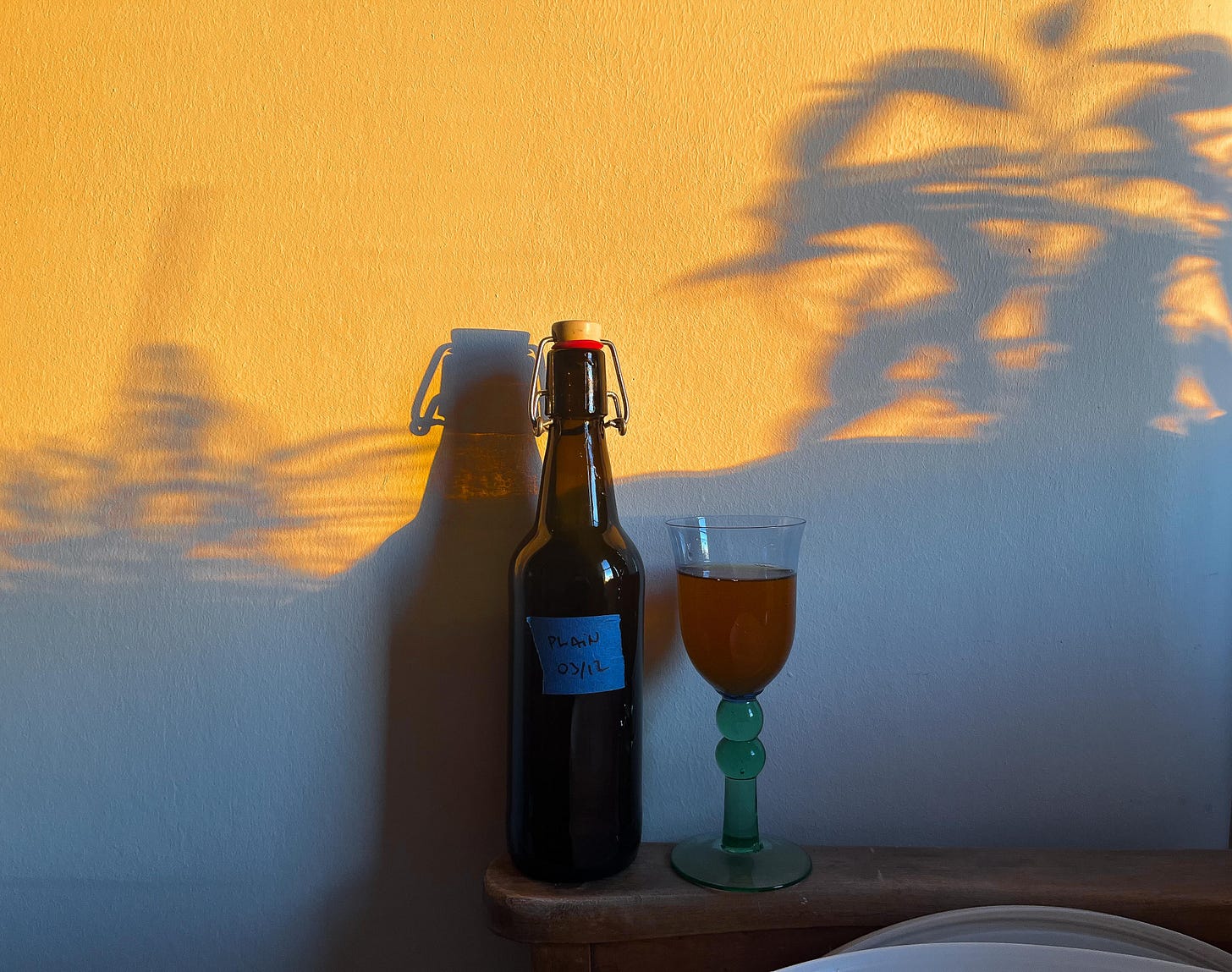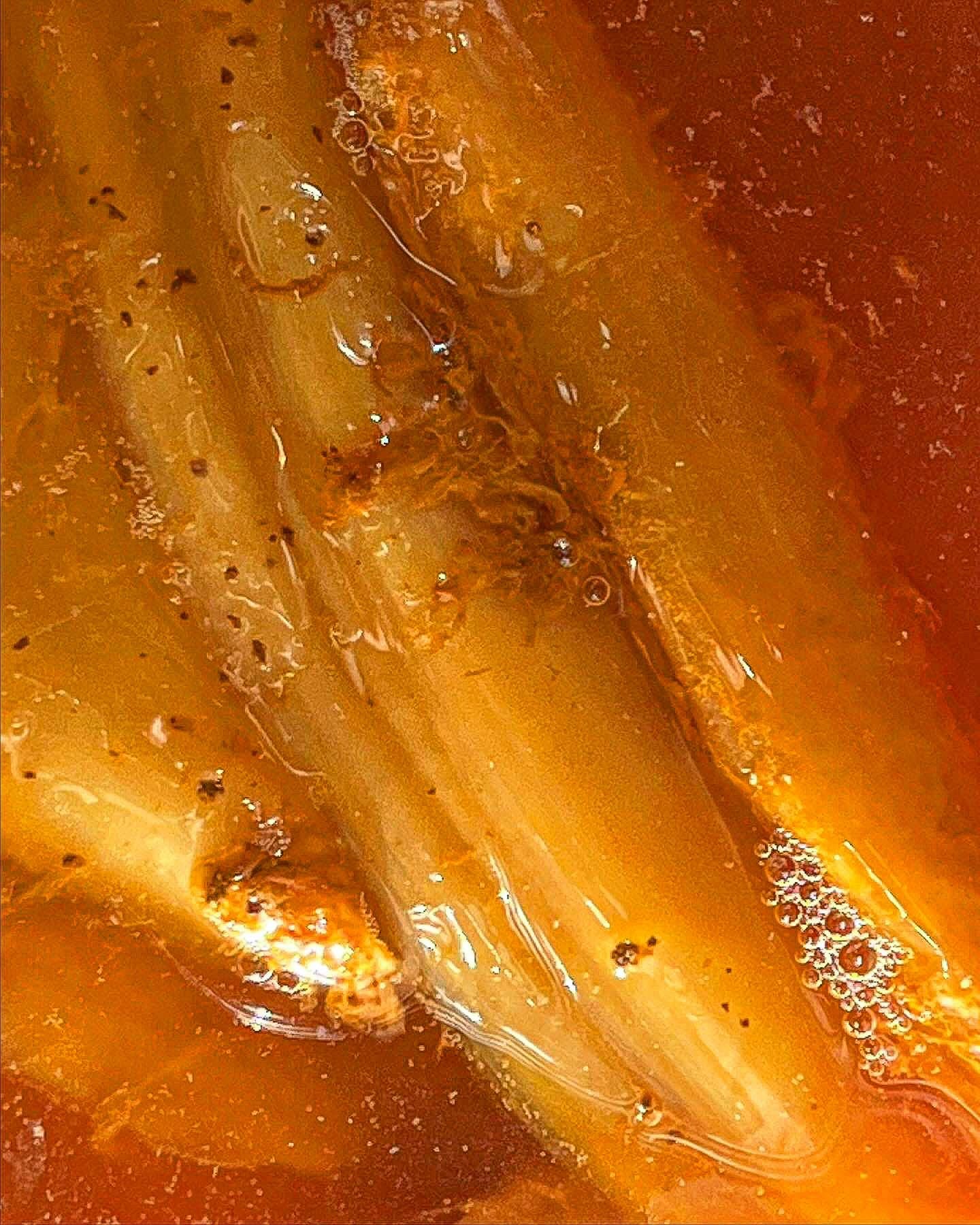Homebrewing kombucha is much more affordable than purchasing it. Only a few ingredients are needed such as water, tea and sugar, and most of you probably have these on hand, as well as two other components that are less likely to be stocked in an average kitchen: a starter kombucha (unflavoured kombucha liquid) and a SCOBY (kombucha mother culture, a gelly-like disc that flows on top).
Homebrewing opens various flavour possibilities since you can brew whatever flavour you fancy. Additionally, making kombucha at home means that you can control how sour or fizzy you want it to be.
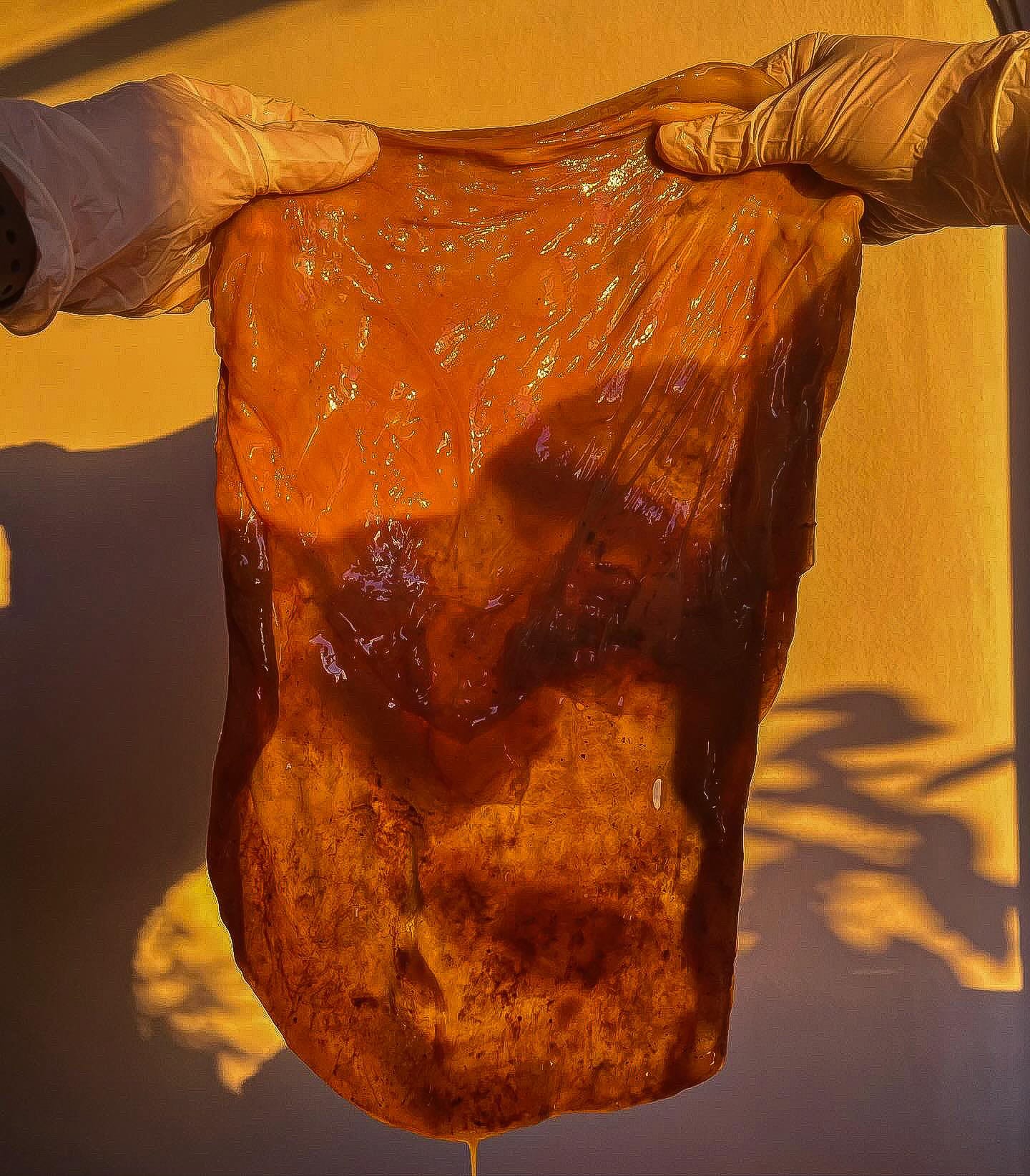
Kombucha
It’s a fermented drink made of sweetened tea, a starter kombucha (unflavoured kombucha), and a SCOBY.
The process of brewing the kombucha involves 3 stages:
preparation of sweetened tea
Begin with steeping the tea. While it’s still warm, add sugar, mix until sugar dissolves, add cold water and let it cool until the temperature reaches 30°C. Once the liquid cools down, add the starter kombucha and the SCOBY.
first fermentation
During the first fermentation, the liquid is left to ferment in a barrel for a couple of days or weeks to develop acidity. The best indicator of the readiness of this stage is to use your instinct and try the liquid. If you like it to be more sour - keep fermenting. If you think the sweetness and acidity are well-balanced, start the second phase - second fermentation.
second fermentation (optional as your kombucha is ready after the first fermentation)
Fill airtight bottles with kombucha and leave them to carbonate. At this stage, kombucha is often flavoured with various fruits or vegetable juices. I recommend using whatever’s in season. Some examples include wild berries, lemon, lime or lavender - the options are almost endless. Let the kombucha ferment between 4 to 7 days. You will want to keep track of the carbonation state and check about once a day or two. If the environment is quite warm, they could over ferment which will make the liquid gush from the bottles! You can keep track by opening the bottles and noting how much gas is let out (ready kombucha will make a burp when you open it).
The waiting time depends on the temperature of the place where you keep your batch. After the second fermentation is done, I recommend keeping your kombucha in the fridge to prevent further carbonation.
Ingredients you need for preparing plain kombucha:
hot water
cold water
tea bags or loose-leaf tea (I used English breakfast tea)
white caster sugar
starter kombucha (unflavoured kombucha liquid)
SCOBY
Where to get a scoby from?
Make it from scratch (takes a bit of time!)
Buy an unflavoured kombucha (around 500ml), transport it into a glass jar with a wider opening, cover it with a breathable cloth, and secure it with a rubber band. Leave the jar in a relatively dark place, don’t move it around and wait for around 3 weeks. After a couple of weeks (the time depends on the temperature of your room) you’ll notice a thin creamy layer that forms on top of the liquid.
Purchase it online
Ask your kombucha friend for one
What is a SCOBY hotel?
The SCOBY hotel is a place where you can keep all your SCOBY when you’re not using them. If you homebrew frequently you’ll possess many of them and the best place to store them would be a wide-opening glass container covered with a jay cloth.
Every time you make a new batch of kombucha, a thin layer of a new SCOBY will grow on your mother SCOBY on top of the liquid. The size of it depends on the cross-section area of your vessel. I used to brew 20 litres of kombucha hence mine was huge. Once your first fermentation is done, separate the SCOBY discs with your hands (I always put gloves on) and place them in the SCOBY hotel. On the surface of the hotel, you’ll also notice a thin layer!
If your SCOBY is too big, cut it with scissors. Also, you can use the same SCOBY more than once!
Equipment I find useful:
quality swing-top bottles
a large plastic bowl
a spider for scooping out tea bags
a plastic barrel for fermentation
a cloth (I used a cotton material from an old pillowcase)
a shoelace for securing the cloth
a wide-mouth glass jar for a SCOBY hotel
a funnel
a plastic chopstick for stirring the sugar and the tea
a jay cloth
a rubber band
a digital thermometer
a scale
gloves for transporting SCOBY
paper label stickers
a brewing sanitiser
General key points on homebrewing:
Buy good quality swing-top bottles
The sweetened tea needs to be at the right temperature for the SCOBY - between 18°C and 32°C
Clean your equipment - hot soapy water would be fine (the only equipment I sanitized was the barrel for the first fermentation)
Make sure to check for yourself when both steps of fermentation are ready. The timeframe depends on the temperature of your place and how much sugar you add
Don’t cover the SCOBY hotel and the container in which kombucha is brewing during the first fermentation with a tight lid as the SCOBY needs to breathe
Ratios I used:




